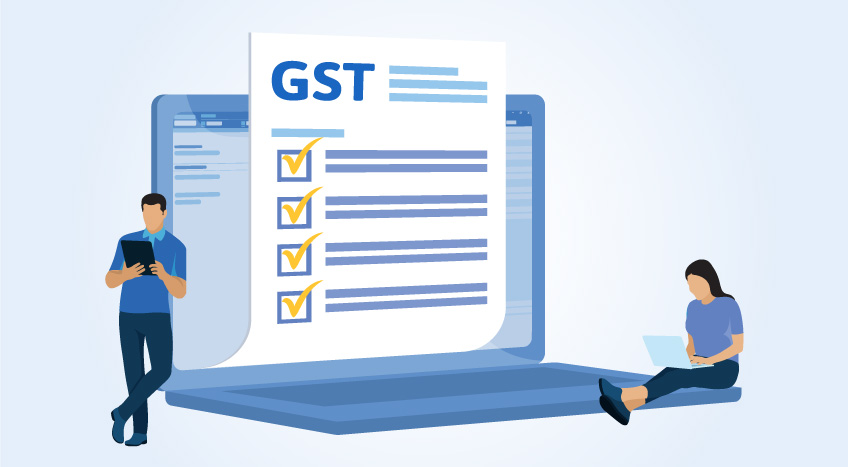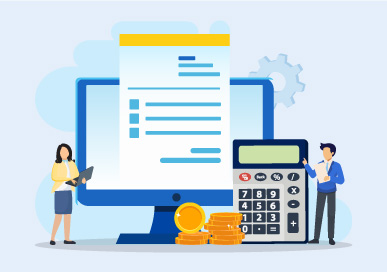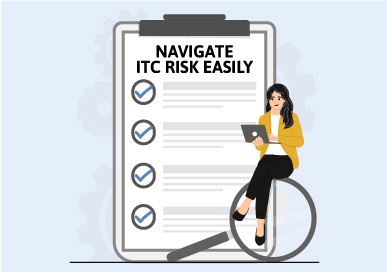E-invoicing under the Goods and Services Tax (GST) regime has revolutionized the way businesses manage their invoicing processes. It is a system that mandates the generation of invoices in a standardized electronic format, ensuring compliance and reducing errors. As of now, e-invoicing has become mandatory for businesses with an annual turnover exceeding ₹10 crores, making it essential for these entities to understand the e-invoice format to comply with GST regulations effectively.
In 2025, updates to e-invoicing regulations may include adjustments to turnover thresholds or changes in compliance requirements, emphasizing the need for businesses to stay informed about the latest developments.
What is an e-Invoice in GST?
An e-invoice is an electronic invoice that adheres to a specific format prescribed by the GST authorities. It plays a crucial role in the GST ecosystem by facilitating seamless data exchange between suppliers and tax authorities.
| Best e-Invoicing Software Solution for Businesses in India | Generate e-Invoice Instantly in TallyPrime |
The e-invoice format can be categorized into 8 broad headings in which the details need to be mentioned. Below are broad headings of e-invoice format:
- Basic details
- Invoice period
- Preceding document / contract reference
- Receipt / contract references
- Supplier information
- Buyer information
- Payee information
- Delivery information
- Ship-To details
- Dispatch from details
- Invoice item details
- Document total
- Extra information like port code, batch details etc.
As per the e-invoice format, certain details are mandatory to be mentioned while sending the invoice details to IRP. Depending upon the nature of business and transactions, some details can be optional as well.
Mandatory details of e-invoice
- Code for supply type - B2B for business to business, EXPWP for export with payment, SEZWP for SEZ with Payment
- Code for document type - INV for Invoice, CRN for Credit Note, DBN for Debit note.
- Document number – Invoice number as per rules prescribed in GST
- Document date
- Supplier legal name
- GSTIN of supplier
- Supplier address
- Supplier place, State code and pin code
- Buyers name and GSTIN
- Place of supply (State code)
- List of items - Provide information about the goods and services being invoiced.
- Document total details - Details of document total including taxes.
- Ship to details if applicable.
Sample e-Invoice Format
Here’s a sample structure of an e-invoice compliant with GST regulations:
|
Field |
Description |
|
Supplier Details |
Name, address, and GSTIN of the supplier |
|
Recipient Details |
Name, address, and GSTIN of the recipient |
|
Invoice Number |
Unique identification number for the invoice |
|
Invoice Date |
Date on which the invoice is issued |
|
Item Details |
Description of goods/services, quantity, rate, and total value |
|
Tax Details |
Breakup of CGST, SGST/UTGST, and IGST |
|
Total Amount |
Total invoice amount including taxes |
|
IRN |
Invoice Reference Number generated by IRP |
|
QR Code |
Scannable code containing key information about the invoice |
What is the QR Code in E-Invoice?
It must appear on every e-invoice to facilitate quick verification by tax authorities. The QR code contains vital information such as:
IRN
GSTIN of both supplier and recipient
Invoice number
Tax details (amounts for CGST, SGST/UTGST, IGST)
How to Generate an e-Invoice in GST
Generating an e-invoice involves several steps:
- Log in to the IRP (Invoice Registration Portal): Access your account on the IRP using your credentials.
- Upload Invoice Data in JSON Format: Prepare your invoice data in JSON format as per the prescribed schema and upload it.
- Generate IRN and QR Code: Upon successful upload, the IRP will generate an IRN and a corresponding QR code.
- Receive Acknowledgment: After processing your request, you will receive an acknowledgment from the IRP confirming successful registration.
- Validate the E-Invoice: Ensure that all details are accurate and that you have received confirmation from the IRP.
Video on e-invoicing in TallyPrime
Frequent Ask Questions
What is the format of E-Invoice?
The e-invoice format is notified in GST rules as Form GST INV-1. In other words, the format or scheme of E-Invoice is detailed via form GSTR INV-1.
What role does the e-Invoice format play in ensuring compliance with tax regulations?
As per the e-invoice format, certain details are mandatory to be mentioned while sending the invoice details to IRP. Depending upon the nature of business and transactions, some details can be optional as well. A GST invoice format is a document that shows the details of the goods and services supplies under the GST system.
How does the E-Invoice format enhance accuracy and reduce errors in invoicing?
With the introduction of E-Invoicing concept in GST, all B2B invoices along with other notified documents need to be uploaded and authenticated by invoice registration portal (IRP) . This ensures that the data is accurate and reduces the possibility of errors.
What benefits do businesses gain by adopting the E-Invoice format for their invoicing processes?
e-Invoicing has several benefits, including---Reduced manual effort, faster invoice processing, improved cash flow, and enhanced financial visibility.
Know more about e-invoices in GST

















